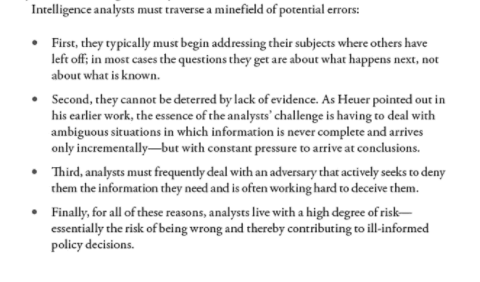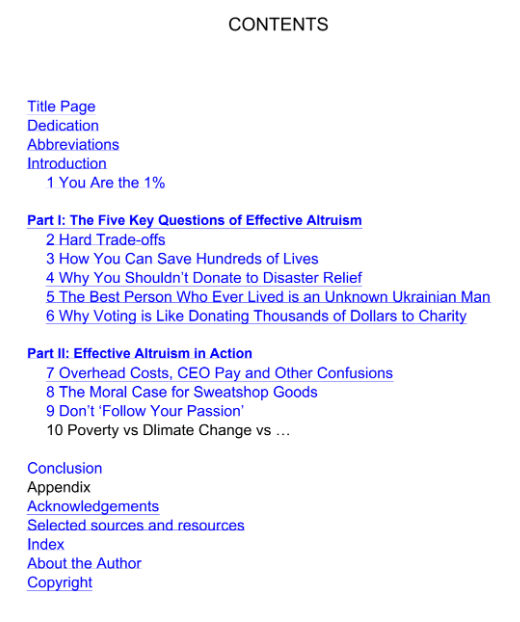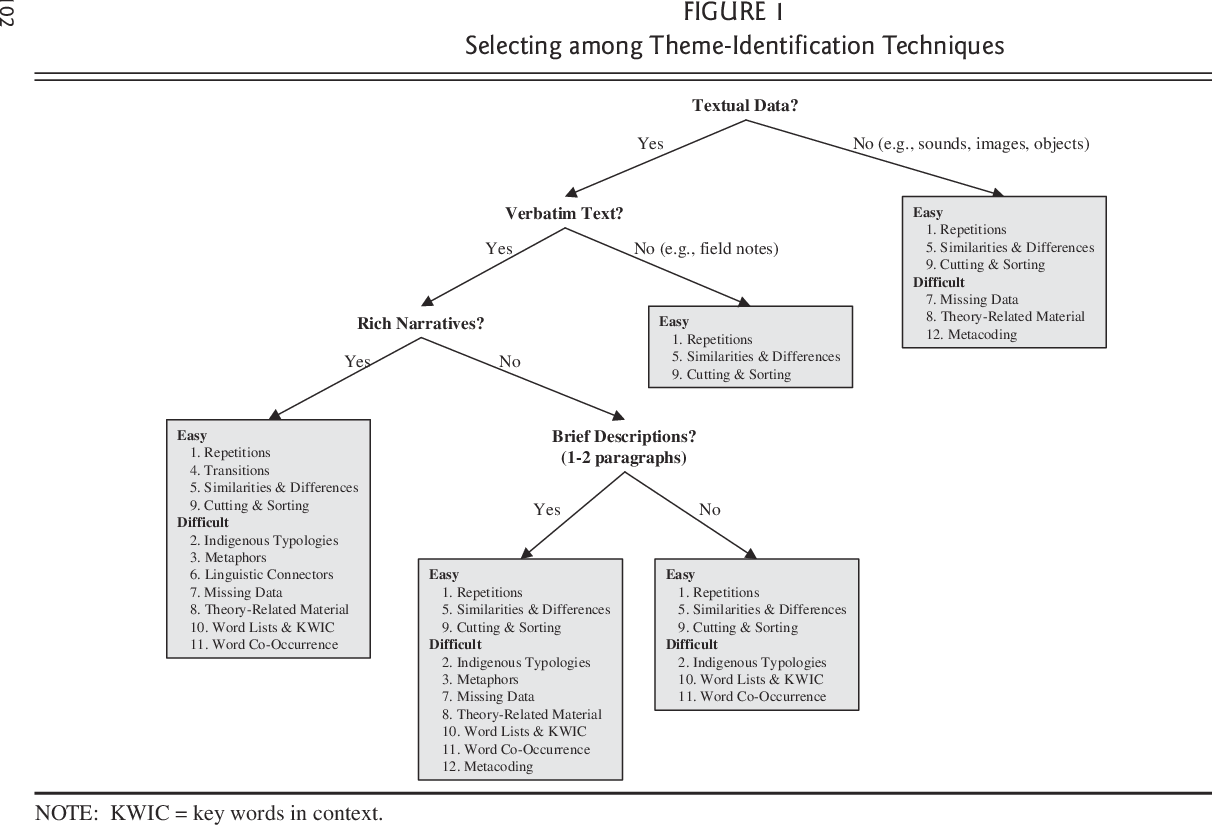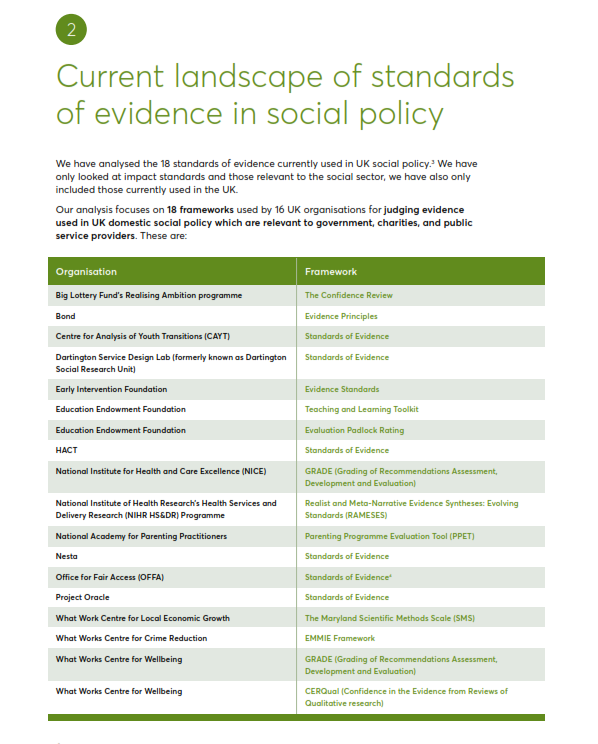This is the title of the 3rd edition of the same, by Randolph H. Pherson and Richards J. Heuer Jr, published by Sage in 2019
It is not cheap book, so I am not encouraging its purchase, but I am encouraging the perusal of its contents via the contents list and via Amazon’s “Look inside” facility.
Why so? The challenges facing intelligence analysts are especially difficult, so any methods used to address these may be of wider interest. These are spelled out in the Foreword, as follows:

This report is of interest in a number of ways:
- To what extent are the challenges faced similar/different to those of evaluations of publicly visible interventions?
- How different is the tool set, and the categorisation of the contents of that set?
- How much research has gone into the development and testing of this tool set?
The challenges
Some of these challenges are also faced by evaluation teams working in more overt and less antagonistic settings, albeit to a lesser degree. For example, what will work in future in a slightly different settings (1), missing and ambiguous evidence (2), and with clients and other stakeholders who may intentionally or unintentionally not disclose or actually mislead (3) , and whose recommendations can affect peoples lives, positively and negatively (4).
The contents of the tool set
My first impression is that this book casts its net much wider than the average evaluation text (if there is such a thing). The families of methods include team working, organising, exploring, diagnosing, reframing, foresight, decision support, and more. Secondly, there are quite a few methods within these families I had not heard of before, including Bowtie analysis, opportunities incubator, morphological analysis, premortem analysis, deception detection and inconsistencies finder. The last two are of particular interest. Hopefully they are more than just a method brand name.
Research and testing
Worth looking at, alongside this publication, is this 17 page paper by Artner, S., Girven, R., & Bruce, J. (2016). Assessing the Value of Structured Analytic Techniques in the U.S. Intelligence Community. RAND Corporation. Its key findings are summarised as follows:
-
- The U.S. Intelligence Community does not systematically evaluate the effectiveness of structured analytic techniques, despite their increased use.
- One promising method of assessing these techniques would be to initiate qualitative reviews of their contribution in bodies of intelligence production on a variety of topics, in addition to interviews with authors, managers, and consumers.
- A RAND pilot study found that intelligence publications using these techniques generally addressed a broader range of potential outcomes and implications than did other analyses.
- Quantitative assessments correlating the use of structured techniques to measures of analytic quality, along with controlled experiments using these techniques, could provide a fuller picture of their contribution to intelligence analysis.
See also Chang, W., & Berdini, E. (2017). Restructuring Structured Analytic Techniques in Intelligence. For an interesting in-depth analysis of bias risks and how the are managed and possibly mismanaged. Here is the abstract:
Structured analytic techniques (SATs) are intended to improve intelligence analysis by checking the two canonical sources of error: systematic biases and random noise. Although both goals are achievable, no one knows how close the current generation of SATs comes to achieving either of them. We identify two root problems: (1) SATs treat bipolar biases as unipolar. As a result, we lack metrics for gauging possible over-shooting—and have no way of knowing when SATs that focus on suppressing one bias (e.g., over-confidence) are triggering the opposing bias (e.g., under-confidence); (2) SATs tacitly assume that problem decomposition (e.g., breaking reasoning into rows and columns of matrices corresponding to hypotheses and evidence) is a sound means of reducing noise in assessments. But no one has ever actually tested whether decomposition is adding or subtracting noise from the analytic process—and there are good reasons for suspecting that decomposition will, on balance, degrade the reliability of analytic judgment. The central shortcoming is that SATs have not been subject to sustained scientific of the sort that could reveal when they are helping or harming the cause of delivering accurate assessments of the world to the policy community.
Both sound like serious critiques, but compared to what? There are probably plenty of evaluation methods where the same criticism could be applied – no one has subjected them to serious evaluation.
Like this:
Like Loading...







